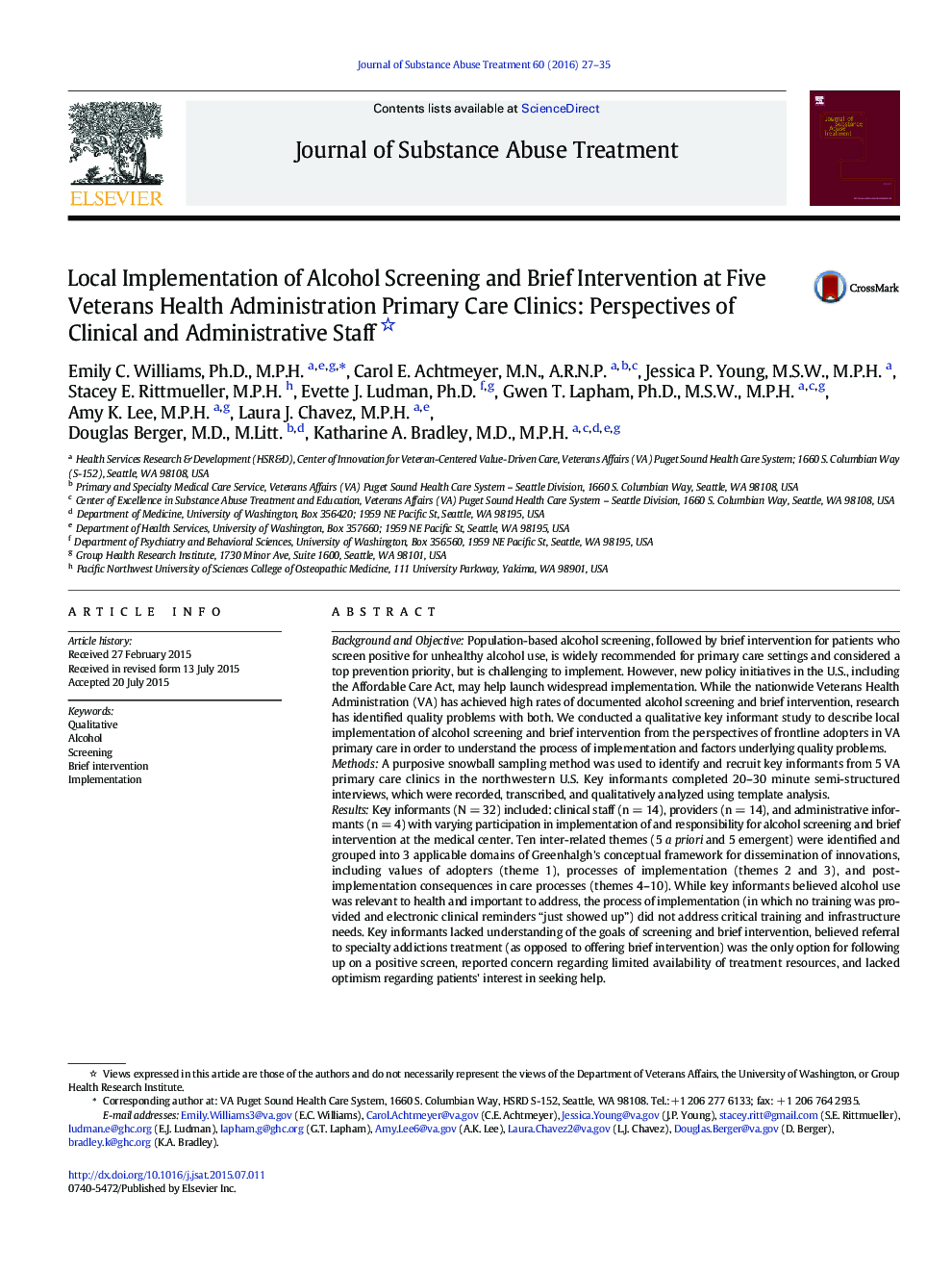| Article ID | Journal | Published Year | Pages | File Type |
|---|---|---|---|---|
| 328401 | Journal of Substance Abuse Treatment | 2016 | 9 Pages |
•Qualitative study of local implementation of screening and brief intervention in VA.•Frontline adopters believed addressing alcohol use in primary care is important.•The process of implementation did not address training and infrastructure needs.•Additional or alternative implementation strategies are likely needed.
Background and ObjectivePopulation-based alcohol screening, followed by brief intervention for patients who screen positive for unhealthy alcohol use, is widely recommended for primary care settings and considered a top prevention priority, but is challenging to implement. However, new policy initiatives in the U.S., including the Affordable Care Act, may help launch widespread implementation. While the nationwide Veterans Health Administration (VA) has achieved high rates of documented alcohol screening and brief intervention, research has identified quality problems with both. We conducted a qualitative key informant study to describe local implementation of alcohol screening and brief intervention from the perspectives of frontline adopters in VA primary care in order to understand the process of implementation and factors underlying quality problems.MethodsA purposive snowball sampling method was used to identify and recruit key informants from 5 VA primary care clinics in the northwestern U.S. Key informants completed 20–30 minute semi-structured interviews, which were recorded, transcribed, and qualitatively analyzed using template analysis.ResultsKey informants (N = 32) included: clinical staff (n = 14), providers (n = 14), and administrative informants (n = 4) with varying participation in implementation of and responsibility for alcohol screening and brief intervention at the medical center. Ten inter-related themes (5 a priori and 5 emergent) were identified and grouped into 3 applicable domains of Greenhalgh's conceptual framework for dissemination of innovations, including values of adopters (theme 1), processes of implementation (themes 2 and 3), and post-implementation consequences in care processes (themes 4–10). While key informants believed alcohol use was relevant to health and important to address, the process of implementation (in which no training was provided and electronic clinical reminders “just showed up”) did not address critical training and infrastructure needs. Key informants lacked understanding of the goals of screening and brief intervention, believed referral to specialty addictions treatment (as opposed to offering brief intervention) was the only option for following up on a positive screen, reported concern regarding limited availability of treatment resources, and lacked optimism regarding patients' interest in seeking help.ConclusionsFindings suggest that the local process of implementing alcohol screening and brief intervention may have inadequately addressed important adopter needs and thus may have ultimately undermined, instead of capitalized on, staff and providers' belief in the importance of addressing alcohol use as part of primary care. Additional implementation strategies, such as training or academic detailing, may address some unmet needs and help improve the quality of both screening and brief intervention. However, these strategies may be resource-intensive and insufficient for comprehensively addressing implementation barriers.
